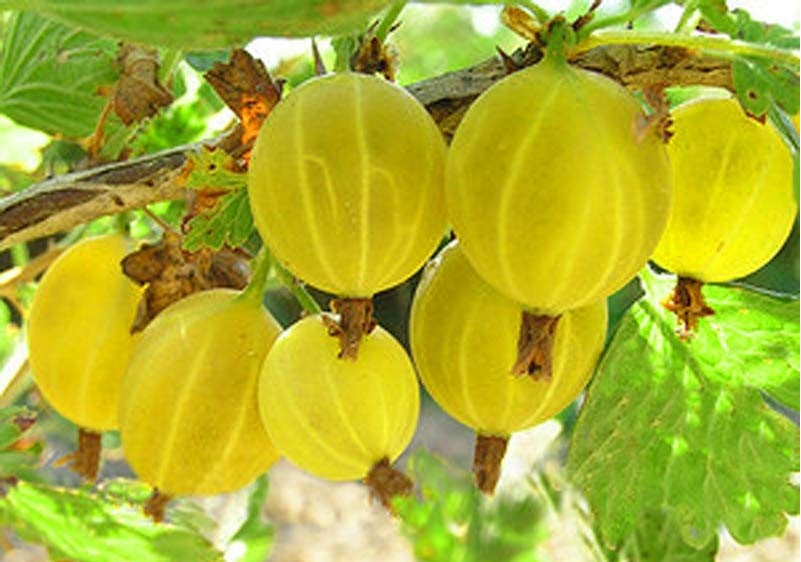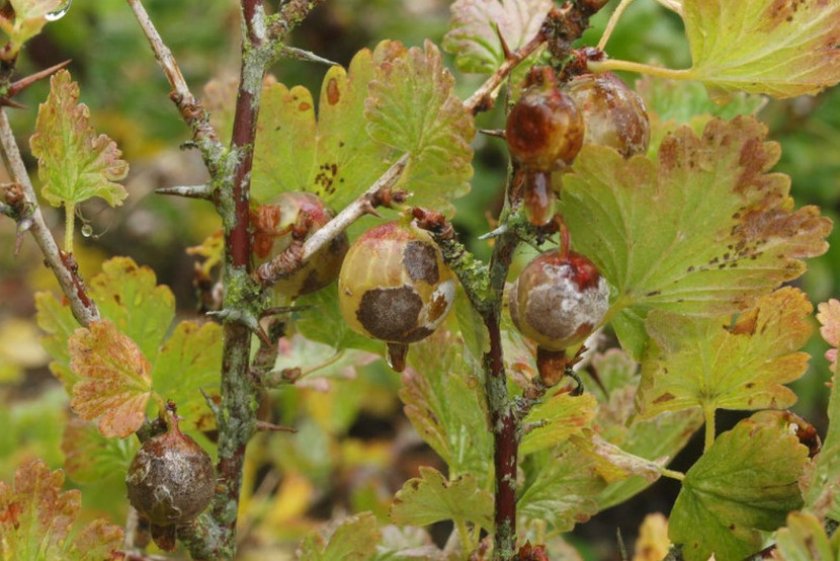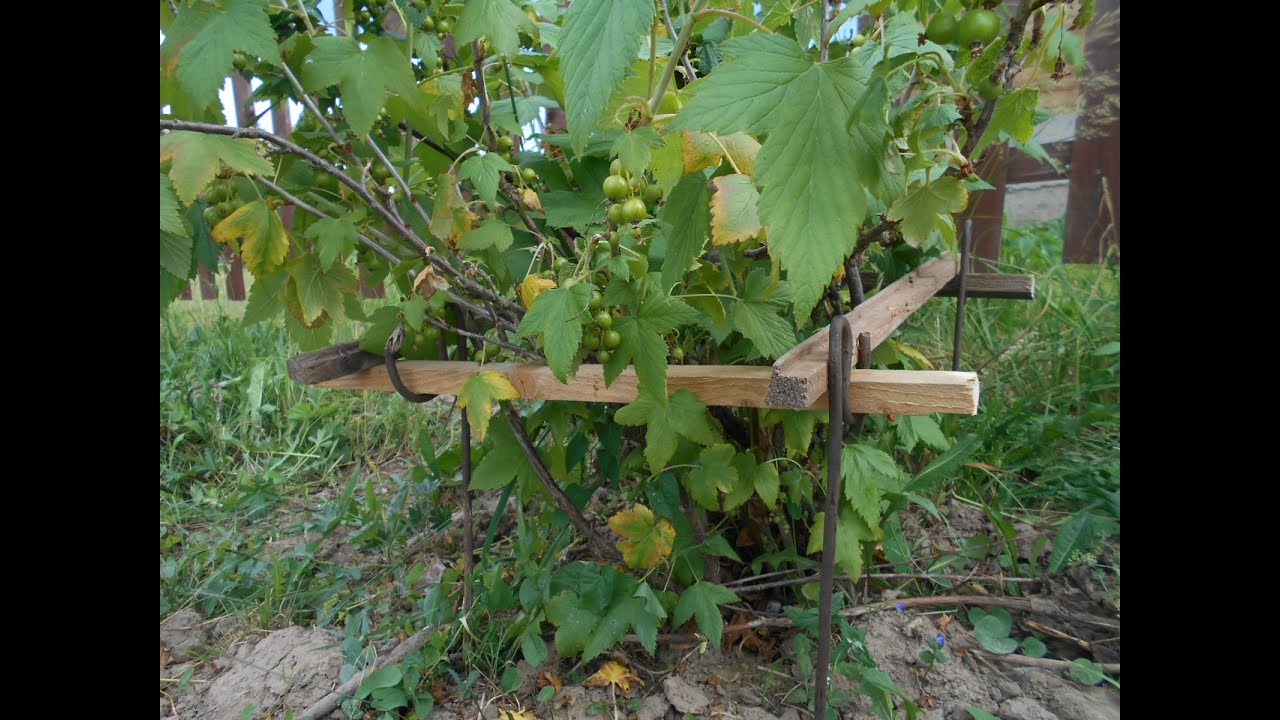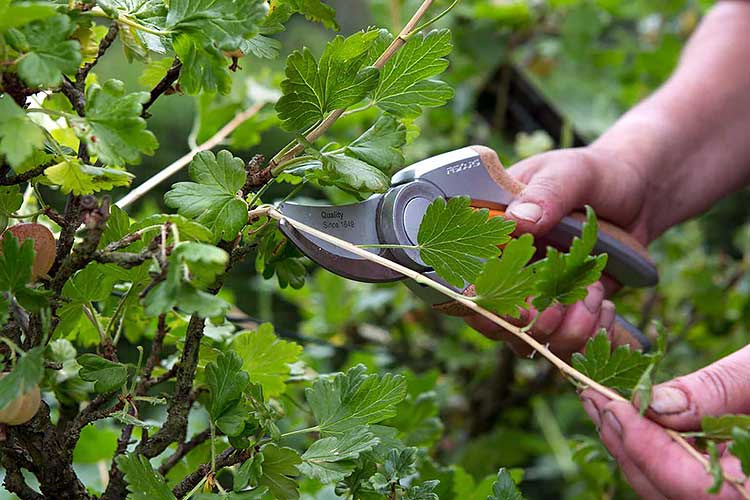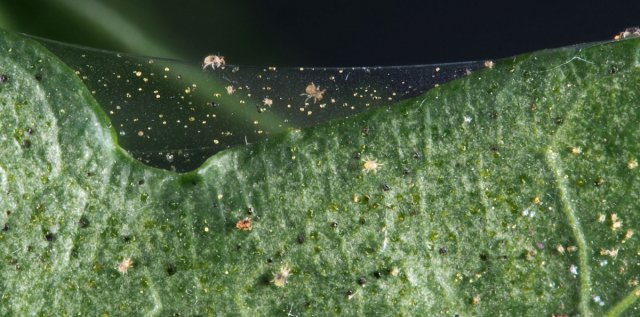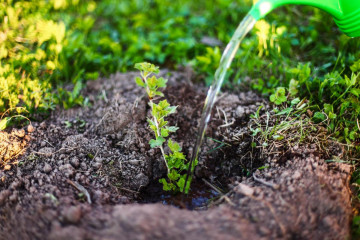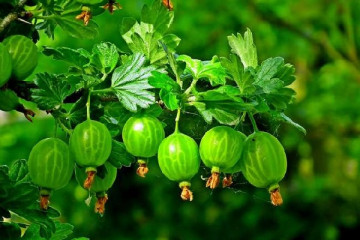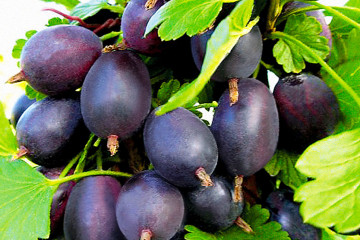Gooseberry Russian yellow - advantages and disadvantages
Content:
Gooseberry is a delicious berry that is ideal for the climate in the Urals and Siberia. It is frost-hardy, sweet, and can be used in a variety of recipes. This article will show you how to grow a fruitful healthy yellow gooseberry bush, all about caring for the plant, and when to harvest.
Description and characteristics of gooseberry Russian yellow
The variety of yellow berries from the Gooseberry family is not so young, it was bred about half a century ago. But the taste has not deteriorated at all during this time.
Origin story
In 1970, at the All-Russian Research Institute of Michurinsky Horticulture, breeder K.D.Sergeeva bred a variety of yellow gooseberries. She crossed several varieties of berries: Oregon, Curry, Careless and Houghton, standard. As a result of the selection, we got a berry that is resistant to cold weather and powdery mildew. In 1974 the variety was entered in the state register and spread in the North-West and Ural districts.
Characteristics of the bushes
If we talk about the characteristics of the bush - structure, leaves, shoots, thorns, buds, etc., then you can describe the yellow gooseberry as a medium bush. Russian yellow has a medium spreading, dense, tall, prickly, as well as thick light green growing shoots, the top of which is colored pink. Lignified shoots of medium thickness are also light.
The bush is covered with sharp straight thorns of medium size (length / thickness), light needles are located at right angles to the shoots. The leaf scar has a rounded shape. Small buds with a dull brown crown, not omitted and slightly deviated. The leaves of the shrub are bright green, slightly shiny, not lowered, have a leathery surface. Mostly straight, but there are varieties with concave leaves. The flowers are usually pale and small.
Characteristics of berries
The berries of the yellow gooseberry are large enough, weighing about 4.5-6 g each oval or ovoid with a noticeable waxy bloom. The skin is dense, of medium thickness, with many branched veins, which are much lighter than the yellow color of the flesh.
The berries taste sour, but rather sweet. The sugar content is 9.3%. The seed content is average. The berry is suitable for eating raw, for making jams, smoothies, desserts, adding tea leaves, etc.
Features of the variety
In addition to being a tasty and healthy berry, gooseberries are also an early honey plant. This is the first color that attracts bees to the site.
Ripening period and yield
Seed planting begins in September and lasts until November. Although the berry is frost-resistant, it is better not to pull until frost when planting.In June and early July, with proper care: constant hilling, getting rid of weeds, the presence of a support and treatment from pests, the bush will give about 5 kg, since the berries weigh on the branches for a long time and do not crumble. A good harvest will be ensured within 10 years.
Taste qualities
The berry of the Russian yellow gooseberry tastes sour, but the main motive is sugar, sweet. The taste is pleasant and slightly unusual, the very thing for gourmets.
Drought resistance and frost resistance
The plant does not tolerate high humidity, therefore it takes root ideally and withstands an arid climate. However, it needs regular watering. Winter is also not terrible for the variety, the bushes easily tolerate frosts without shelter.
Disease and pest resistance
With timely processing, the plant's immunity will be significantly increased, therefore, the disease cannot affect the gooseberry. Diseases and pests that most often overcome the variety:
- powdery mildew;
- shoot aphid;
- spider mite;
- sawfly;
- septoria;
- anthracnose.
If treatment was carried out against insects and parasites, then the collection can be carried out only after three weeks. The next treatment should be carried out two weeks after picking the berries.
Using berries
Enterprises do not hesitate to buy berries in huge quantities for production. It is a versatile product that is suitable for fresh sale, production, cooking, canning.
Advantages and disadvantages of the Russian yellow variety
Among the positive qualities of the variety are noted: frost resistance, resistance to heat and drought, self-fertility, that is, no pollinator is needed. And, of course, taste.
Of the shortcomings, gardeners highlight the abundant spreading of the bush during growth, while it is young.
Planting young seedlings on the site
The quality of the crop and the plant's immunity directly depend on the choice of seedlings, soil preparation and planting site, as well as watering the young plant.
Selection and preparation of seedlings
When choosing a seedling, you need to pay attention to two things: the root system and the elasticity of the shoots. The root system must not be dry. Ideally, a healthy shoot has four skeletal roots of 13 cm each. It is easy to check its quality - make a cross section. If the color of the cut is beige or cream, the seedling is alive, healthy, if it is brown, affected by the disease.
Landing time and pattern
You need to plant a gooseberry seedling in the fall from September to November. Necessarily before the first cold weather. The bushes are planted in holes 2 m apart to a depth of 10-15 cm to hide the root collar.
Choosing a landing site
A place with good lighting is suitable, without excess moisture in the soil. Chernozem and light loamy soils are a fertile atmosphere for the growth of yellow gooseberries. You also need to protect the seedlings from cold winds and drafts.
Site preparation
First, the destruction of weeds, cleaning the planting area, then fertilizing the soil when digging the soil. You will need 15 kg of humus per 1 m². Add sand or clay if necessary.
Planting process
Short instructions on how to plant Russian yellow gooseberries:
- The roots of the seedling are placed in water for a day before planting.
- Dig holes 60 × 60 × 70 cm in size, the distance between them should be at least 2 m.
- Fertilize the soil in the pits with horse humus with wood ash and superphosphate.
- Place the seedling in the hole at an angle of 45 ° and sprinkle with earth.
- The root collar should be 10-15 cm deep. This helps to strengthen and form roots.
- Pour water over the seedling. Two buckets per hole.
- Create a circular hole with a diameter of half a meter. After planting in a day, fill with peat and sawdust.
The process of planting seedlings is not as complicated as it might seem at first glance. The main thing is that you need to do some procedures in advance: choose a suitable place, prepare holes, humus.
Features of seasonal care
The shrub is adapted to an arid climate, resistant to frost and tolerates rainy summers quite well. But the yellow gooseberry also has its own characteristics: a dense crown, sharp and frequent thorns, as well as branches can grow widely.
Watering and feeding
The shrub does not like moisture, but in the summer it is necessary to water twice a week, two buckets under the bush in the morning and in the evening. Regular watering will be effective during the fruiting period. During this period, the kidneys are formed for the next year.
Mulching and loosening
Mulching and periodic loosening is the key to the health and successful growth of the seedling. After watering, it is necessary to loosen the soil, fertilize, destroy weeds. Thus, the plant will receive the maximum amount of nutrients.
Using supports
Gooseberry supports are made from wooden blocks or metal wire. Both options are convenient so that the branches grow slightly upward. This simplifies harvesting and access to the root system and trunk during processing.
Preventive treatment
Fungicides, insecticides, insectofungicides, urea or boiling water - any remedy in early spring will help the seedling to resist diseases and parasites. Treatment with both chemical and biological preparations will provide the plant with increased immunity.
Pruning
Getting rid of the old increases the amount of the harvest. It is necessary to prune old dried shoots to buds, diseased, twisted branches to the ground. The best time to care for a plant is early spring, when the growing season has not yet begun.
Fighting overgrowth of gooseberries - ensuring access to sunlight and additional nutrients to the young branches.
Preparing for winter
Low temperature resistance reduces protection costs during winter periods. For wintering, all you need to do is remove the supports so that the branches are closer to the ground.
Reproduction
Growing a seedling from a seed is a laborious process. You can propagate fruitful gooseberries using a bush.
Experienced gardeners unanimously advise to propagate the bush by dividing. To do this, the plant is dug out of the ground in November, sawn into 2-3 parts, which are planted in previously dug holes, and watered. In the spring, you need to spud young delenki to stimulate root growth.
You can also propagate the Russian yellow gooseberry by cuttings and layering. In the first case, green twigs are cut from the crown of the head, rooted in water, and then planted in open ground. In the second, the lower branches of the bush are bent to the ground, covered with soil. After a few weeks, they will grow to the ground, and the branches can be cut off from the mother bush and transplanted to another place.
Pest and disease control
The Russian yellow gooseberry has a stable immunity to diseases and pests. In any case, preventive measures are undoubtedly the best option. For this, spraying with drugs, disinfecting solutions is carried out, bushes are mulched and soil is fertilized.
Yellow Russian gooseberry is a spectacular home garden plant that produces about 15 kg of berries every year. Timely fertilization procedures, disease prevention, pruning and maintenance will extend the life of the bush for several years.
